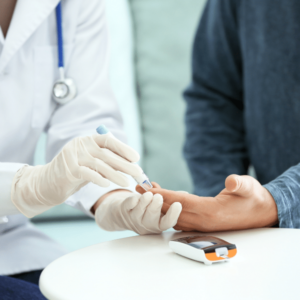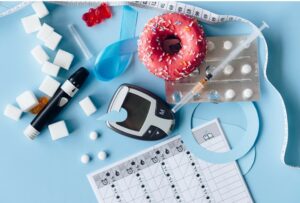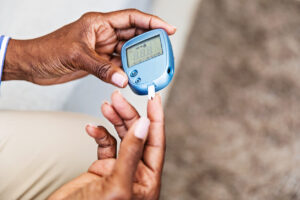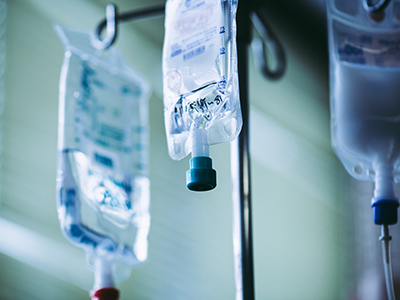Diabetic Ketoacidosis (DKA) is a serious and potentially life-threatening complication of diabetes. It occurs when the body produces high levels of blood acids called ketones, usually due to a lack of insulin. DKA is more commonly seen in individuals with type 1 diabetes, but it can also occur in those with type 2 diabetes under certain circumstances. Prompt and effective treatment is crucial in managing DKA and preventing its complications. In this blog post, we will delve into the details of DKA treatment, covering the key aspects that healthcare professionals and individuals with diabetes should be aware of.
Contents
What is Diabetic Ketoacidosis (DKA)?

Diabetic Ketoacidosis (DKA) is a serious and potentially life-threatening complication of diabetes, primarily associated with type 1 diabetes. However, it can also occur in individuals with type 2 diabetes under certain circumstances. DKA develops when there is a shortage of insulin in the body, leading to an accumulation of ketones in the blood.
Here are the key features of Diabetic Ketoacidosis:
- Insulin Deficiency: The primary trigger for DKA is a deficiency of insulin. Insulin is a hormone produced by the pancreas that helps cells absorb glucose from the bloodstream to use as energy. In the absence of sufficient insulin, cells are unable to take in glucose, causing blood sugar levels to rise.
- Increased Ketone Production: As the body recognizes the lack of glucose for energy, it starts breaking down fats for an alternative energy source. This process, known as lipolysis, releases ketones as byproducts. Ketones are acidic substances that, when accumulated in excessive amounts, can lead to a condition called acidosis.
- Hyperglycemia: With insufficient insulin and increased production of glucose by the liver (a process known as gluconeogenesis), blood sugar levels soar, resulting in hyperglycemia. The combination of high blood sugar and elevated ketones characterizes the metabolic imbalance seen in DKA.
Different DKA Treatment Methods
Diabetic Ketoacidosis (DKA) is a medical emergency that requires prompt and comprehensive treatment. The primary goals of DKA treatment are to correct hyperglycemia, reverse ketosis, address dehydration, and manage electrolyte imbalances. The treatment methods involve a combination of insulin therapy, fluid replacement, and electrolyte management.
Insulin Therapy

Insulin is the cornerstone of DKA treatment. The goal is to restore insulin levels to suppress ketone production and facilitate the uptake of glucose by cells. Initially, intravenous (IV) insulin is administered to ensure rapid and precise control over blood glucose levels. Regular insulin is commonly used due to its short onset and duration of action.
Initiation of Insulin Infusion: Upon admission to the hospital, a continuous intravenous insulin infusion is started. The initial rate is determined based on the patient’s weight and the severity of DKA. Frequent monitoring of blood glucose and ketone levels is crucial during this phase, with adjustments made to the insulin infusion rate as needed.
Transition to Subcutaneous Insulin: As DKA improves, and blood ketone levels decline, a transition is made from IV insulin to subcutaneous insulin injections. This transition is typically initiated when the patient’s blood glucose levels approach the target range, and acidosis is resolving. Subcutaneous insulin, often in the form of multiple daily injections or an insulin pump, continues to be administered to maintain stable blood glucose control.
Fluid Replacement
Dehydration is a common and potentially severe complication of DKA due to excessive urination and fluid loss. Intravenous fluids are administered to restore and maintain fluid balance. The choice of fluids is critical, and isotonic saline (0.9% sodium chloride) is commonly used.
Calculation of Fluid Replacement: The volume and rate of fluid replacement are calculated based on the degree of dehydration, weight, and ongoing losses. A common approach is to provide half of the calculated fluid deficit within the first 8 hours and the remaining half over the next 16 hours. Monitoring for signs of fluid overload, such as edema or respiratory distress, is essential.
Electrolyte Management
DKA can lead to significant electrolyte imbalances, including low levels of potassium, sodium, and phosphorus. Electrolyte replacement is a critical component of DKA treatment.
Potassium Replacement: Despite total body potassium depletion, levels may appear normal or elevated initially due to the shift of potassium out of cells. As insulin therapy begins, potassium is driven back into cells, potentially leading to hypokalemia. Therefore, potassium replacement is started early in DKA treatment and is closely monitored to prevent both hypokalemia and hyperkalemia.
Sodium and Phosphorus Management: Sodium and phosphorus levels are also carefully monitored and corrected as needed. Sodium bicarbonate is generally avoided unless severe acidosis is present, as rapid correction may lead to paradoxical worsening of acidosis.
Nutritional Support

Nutritional support plays a crucial role in the comprehensive management of Diabetic Ketoacidosis (DKA). While fluid replacement, insulin therapy, and electrolyte correction are primary components of DKA treatment, nutritional support is vital to address the metabolic needs of the patient and prevent complications associated with malnutrition. Here is a detailed description of the nutritional support for DKA:
Initiation of Nutritional Support:
- Nutritional support in DKA is typically initiated cautiously after the restoration of intravascular volume and stabilization of blood glucose levels.
- Enteral nutrition (tube feeding) is preferred over parenteral nutrition (IV feeding) when possible, as it helps maintain gut integrity and function.
Timing of Nutritional Support:
- Nutritional support is usually initiated within the first 4 to 6 hours after the start of insulin therapy and fluid resuscitation.
- Early initiation helps prevent catabolism, preserves lean body mass, and supports overall recovery.
Caloric Requirements:
- Caloric requirements are determined based on the patient’s energy expenditure, which can be influenced by factors such as age, weight, activity level, and the severity of the underlying illness.
- The initial caloric intake is often conservative to avoid overloading the metabolic system.
Composition of Nutritional Support:
- The composition of nutritional support includes a balance of carbohydrates, proteins, and fats. However, the emphasis is on controlled carbohydrate intake to prevent exacerbation of hyperglycemia.
- Protein intake is important for wound healing, muscle preservation, and immune function.
- Fats provide a concentrated source of energy but should be limited in the context of DKA due to the risk of hypertriglyceridemia.
Oral Medicines

It’s important to note that Diabetic Ketoacidosis (DKA) is a severe and acute complication of diabetes characterized by hyperglycemia, ketosis, and metabolic acidosis. The primary treatment for DKA involves intravenous (IV) administration of fluids and insulin, as oral medications are not suitable for managing this acute condition. Oral medications are typically reserved for the management of chronic diabetes and are not considered appropriate for the acute and critical setting of DKA.
However, for the management of chronic diabetes, various oral medications are commonly used to control blood glucose levels. Here is a detailed description of some common oral medications for the management of diabetes, separate from the acute treatment of DKA:
Metformin:
- Mechanism of Action: Metformin is a biguanide that reduces glucose production in the liver and improves insulin sensitivity in peripheral tissues.
- Indications: It is often the first-line oral medication for type 2 diabetes and may be used in combination with other agents.
- Side Effects: Common side effects include gastrointestinal symptoms such as nausea and diarrhea. It does not cause hypoglycemia when used alone.
Sulfonylureas:
- Mechanism of Action: Sulfonylureas stimulate insulin secretion from the beta cells of the pancreas.
- Indications: Used to enhance insulin secretion in type 2 diabetes.
- Side Effects: Hypoglycemia is a potential side effect, especially if used inappropriately or in combination with other agents that lower blood glucose.
Follow-up Care After DKA Treatment

Follow-up care after Diabetic Ketoacidosis (DKA) treatment is essential to ensure a smooth transition from the acute phase to ongoing diabetes management, as well as to address any underlying causes or contributing factors. The post-DKA follow-up plan involves monitoring, education, and collaboration among healthcare providers. Here is a detailed description of the key components of follow-up care after DKA treatment:
Monitoring:
- Blood Glucose Monitoring: Regular monitoring of blood glucose levels is crucial to ensure glycemic control. Patients may be advised to check their blood glucose levels multiple times a day, especially during periods of illness or stress.
- Ketone Monitoring: Periodic monitoring of ketones, especially during illness or other stressors, helps detect early signs of ketosis and prevent a recurrence of DKA.
Education and Lifestyle Management:
- Diabetes Education: Patients should receive ongoing education on diabetes self-management, including insulin administration, proper nutrition, physical activity, and the recognition of signs and symptoms of DKA.
- Meal Planning: Guidance on meal planning, carbohydrate counting, and understanding the impact of different foods on blood glucose levels is essential.
Regular Follow-Up Appointments:
- Endocrinologist or Diabetes Specialist: Patients should schedule regular follow-up appointments with an endocrinologist or diabetes specialist to monitor overall diabetes management and make necessary adjustments.
- Primary Care Provider: Regular check-ups with a primary care provider are essential for addressing general health concerns and coordinating comprehensive care.
Sources To Get DKA Treatment

For accurate and up-to-date information on Diabetic Ketoacidosis (DKA) treatment, it is recommended to refer to reputable medical websites, organizations, and academic institutions. Here are some trusted online sources where you can find information on DKA treatment:
- American Diabetes Association (ADA): The ADA provides comprehensive information on DKA, including its symptoms, causes, and treatment guidelines.
- Endocrine Society: The Endocrine Society offers clinical practice guidelines and resources for managing DKA.
- Diabetes Mantra: Diabetes Mantra is a clinical decision support system that provides in-depth articles on medical topics, including DKA.
- MedlinePlus: MedlinePlus, a service of the U.S. National Library of Medicine, offers consumer-friendly information on various health topics, including DKA.
- Mayo Clinic: Mayo Clinic provides reliable information on DKA, including its symptoms, causes, and treatment options.
- National Institute of Diabetes and Digestive and Kidney Diseases (NIDDK): NIDDK offers resources on diabetes, including information on preventing and managing DKA.
Conclusion
The treatment of Hyperglycemic Hyperosmolar State (H3) involves a comprehensive and systematic approach. Fluid resuscitation, electrolyte management, insulin therapy, identification and treatment of precipitating factors, close monitoring, and supportive care are integral components of the H3 treatment method. A multidisciplinary team working in concert ensures a holistic and effective approach, promoting patient recovery and minimizing the risk of complications associated with this severe metabolic emergency.
Do you want to get rid of diabetes? Join our online diabetes treatment program and reverse Diabetes naturally through lifestyle changes such as a Personalized Diet plan, Exercise, Yoga, dieticians, and health coaches.

